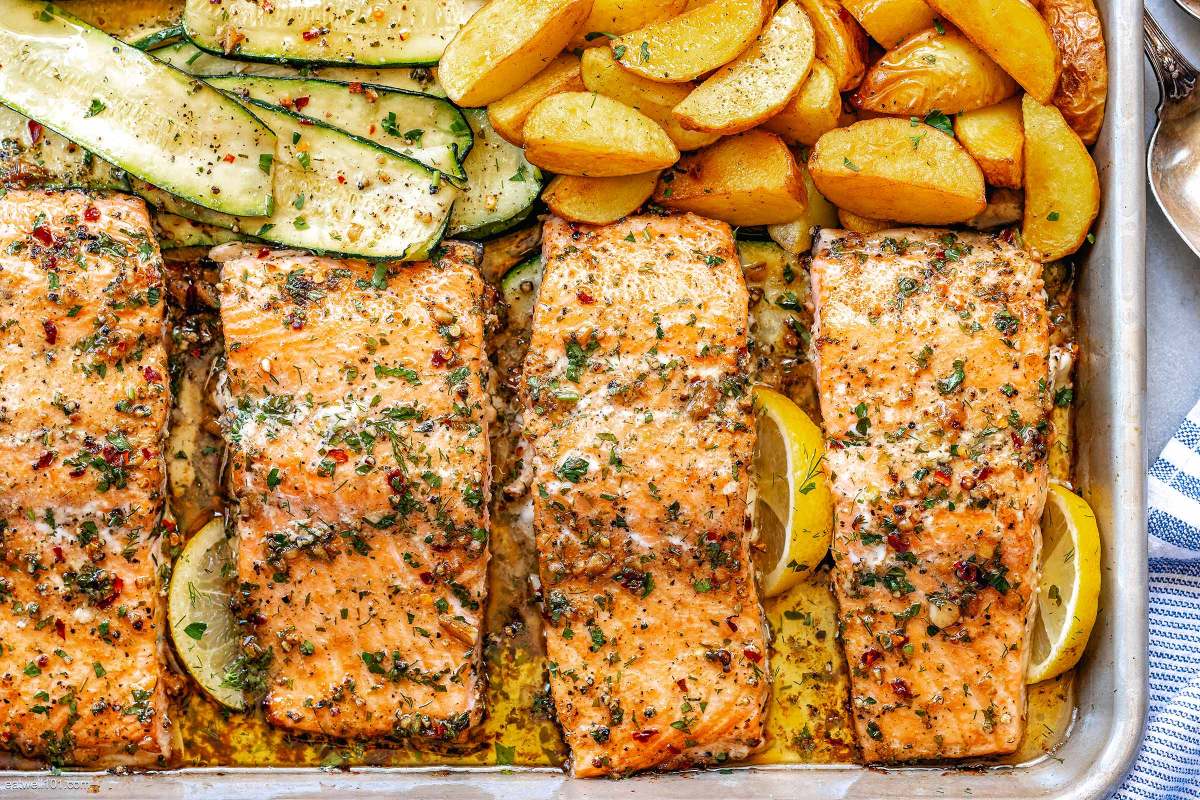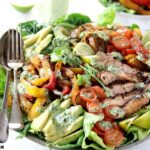Imagine a weeknight where delicious, healthy, and Banting-friendly dinners are ready in a flash, leaving your kitchen sparkling clean. No more mountains of dirty dishes, just vibrant flavors and the satisfaction of a perfectly balanced meal. This guide unveils the secrets to effortless one-pan Banting dinners, showcasing diverse recipes and simple techniques that will transform your weeknight routine. Prepare to experience the joy of convenient cooking without compromising on taste or nutritional integrity.
We’ll explore five unique flavor profiles, from the sun-drenched vibrancy of Mediterranean cuisine to the aromatic spices of Asian-inspired dishes and the zesty zest of Mexican flavors. Each recipe is meticulously crafted to adhere to Banting principles, providing a detailed breakdown of ingredients, step-by-step instructions, and nutritional information. We’ll also delve into ingredient substitutions, cooking method adaptations, and time-saving strategies to ensure a smooth and enjoyable cooking experience, every single time.
Step-by-Step Cooking s & Visual Descriptions

This section details the preparation of a flavorful and visually appealing One-Pan Banting Chicken and Vegetable Bake. This recipe is designed for ease of preparation and minimal cleanup, perfect for a busy weeknight. The vibrant colors and textures of the ingredients combine to create a satisfying and healthy meal.
One-Pan Banting Chicken and Vegetable Bake Preparation
The recipe begins with preparing the ingredients. First, 1.5 lbs of boneless, skinless chicken breasts are cut into 1-inch cubes. Their pale, firm texture is readily apparent. Next, a medley of vegetables is prepared: one medium onion, chopped into half-inch pieces, revealing its layered structure and pale yellow hue; one red bell pepper, diced into similarly sized pieces, displaying its bright red color; and one cup of broccoli florets, their vibrant green color contrasting nicely with the other vegetables. Finally, two tablespoons of olive oil, a splash of lemon juice, and a generous amount of mixed herbs (rosemary, thyme, and oregano) are measured out.
Cooking Process: Stage 1 – Browning the Chicken
The chicken cubes are added to a large oven-safe skillet coated with one tablespoon of olive oil. Over medium-high heat, the chicken is seared for about 5-7 minutes, stirring occasionally, until it develops a beautiful golden-brown crust. The initially pale chicken pieces transform, taking on a rich, caramelized appearance. The aroma of browning chicken fills the kitchen, a savory and inviting scent.
Cooking Process: Stage 2 – Sautéing the Vegetables
Once the chicken is browned, the chopped onion and red bell pepper are added to the skillet. These are sautéed for about 3-5 minutes, until they begin to soften and slightly caramelize. The onions become translucent, their layers softening and turning a light golden brown, while the red peppers maintain their vibrant color but lose some of their crispness. The aroma intensifies with the sweet notes of the peppers and onions.
Cooking Process: Stage 3 – Combining and Baking
The broccoli florets are then added to the skillet, along with the remaining tablespoon of olive oil, lemon juice, and mixed herbs. Everything is tossed gently to combine, ensuring the vegetables and chicken are evenly coated. The mixture becomes a vibrant array of colors and textures: the golden-brown chicken, the translucent onions, the bright red peppers, and the deep green broccoli.
The skillet is then transferred to a preheated oven at 375°F (190°C). It bakes for approximately 20-25 minutes, or until the chicken is cooked through and the vegetables are tender-crisp. During baking, the aromas intensify, creating a rich and inviting blend of savory chicken, sweet peppers, and aromatic herbs.
The Final Dish
The finished dish is a colorful and fragrant masterpiece. The chicken is tender and juicy, its golden-brown crust providing a delightful contrast to the soft interior. The vegetables are tender-crisp, retaining their vibrant colors and individual textures. The onions are sweet and caramelized, the peppers retain their sweetness with a slight char, and the broccoli is tender yet retains a pleasant bite. The aroma is a delightful mix of savory chicken, sweet peppers, and fragrant herbs, creating a mouthwatering experience before the first bite. The overall presentation is rustic yet elegant, a testament to the simplicity and beauty of well-cooked ingredients.
Banting-Friendly Ingredient Substitutions & Adaptations
One-pan Banting dinners prioritize simplicity and ease of cleanup, but flexibility is key to accommodating dietary needs and preferences. This section explores substitutions for common ingredients and adaptations for various cooking methods, all while staying true to the low-carbohydrate principles of the Banting diet. Remember that precise substitutions can impact both the taste and nutritional profile of your dish, so careful consideration is advised.
Ingredient Substitutions
Understanding the role of each ingredient in your chosen Banting recipe allows for effective substitutions. For example, if a recipe calls for cauliflower rice, you could substitute it with finely chopped broccoli or cabbage for a similar texture and nutritional value, although the flavor profile will subtly shift. Similarly, certain spices can be swapped for others to achieve a similar flavor profile.
- Cauliflower Rice Substitutes: Finely chopped broccoli or cabbage offer a similar texture. Broccoli adds a slightly more intense flavor, while cabbage provides a milder taste. Nutritional value is comparable in terms of fiber and vitamins, but the carbohydrate content might vary slightly.
- Nut Flour Substitutions: Almond flour is a staple, but you can explore substitutes like coconut flour or sunflower seed flour. Coconut flour absorbs more liquid, requiring recipe adjustments. Sunflower seed flour offers a slightly nutty flavor and is richer in healthy fats. The resulting texture will vary, with coconut flour yielding a denser product and sunflower seed flour a lighter one.
- Spice Substitutions: Experimenting with spices is key to adapting flavors. For instance, cumin can be partially substituted with coriander for a warmer, earthier note in a Banting chili. Remember that some spices are more pungent than others, so start with smaller quantities and adjust to your taste.
Cooking Method Adaptations
The beauty of one-pan Banting dinners lies in their adaptability to various cooking methods. While many recipes work well in the oven, you can easily adapt them for stovetop cooking or grilling. However, adjustments might be necessary to account for different heat distribution and cooking times.
- Oven to Stovetop: Recipes designed for oven baking can often be adapted for stovetop cooking using an oven-safe skillet. Reduce the cooking temperature and increase the cooking time, stirring frequently to prevent burning. This method might result in a slightly different texture; for example, oven-baked vegetables will be softer than those stir-fried on the stovetop.
- Oven to Grill: Grilling offers a smoky char that can add depth to Banting dishes. Pre-cook ingredients in the oven before grilling to ensure even cooking and prevent burning. This will require careful monitoring and adjustments to cooking time based on the heat intensity of your grill.
- Stovetop to Oven: For recipes starting on the stovetop (e.g., sautéing vegetables), you can transfer the pan to the oven for a slower, more even cooking of the dish. This works well for recipes requiring a longer cooking time to fully tenderize tougher meats or vegetables. The resulting texture and moisture content will be subtly different compared to solely stovetop cooking.
Mastering the art of one-pan Banting dinners is more than just a culinary skill; it’s a lifestyle upgrade. By embracing these simple yet effective techniques, you’ll unlock a world of flavorful, healthy meals that require minimal cleanup. From the sizzling sounds of ingredients melding together to the tantalizing aromas filling your kitchen, every step is designed for efficiency and enjoyment. So, ditch the complicated recipes and embrace the simplicity of one-pan cooking – your taste buds and your kitchen will thank you.
Commonly Asked Questions
Can I use frozen vegetables in these recipes?
Yes, frozen vegetables work well in many of these recipes. Just be sure to adjust cooking times accordingly, as they may require less cooking time than fresh vegetables.
What if I don’t have all the specified ingredients?
The recipes include substitution suggestions, but feel free to experiment with similar Banting-friendly ingredients based on your preferences and availability. The flavor profile might shift slightly, but the core principles will remain.
Can I make these recipes ahead of time?
Some components, like chopping vegetables, can be prepped in advance. However, it’s best to cook these recipes shortly before serving for optimal texture and flavor.
Are these recipes suitable for beginners?
Absolutely! The step-by-step instructions and clear explanations make these recipes accessible to cooks of all skill levels. One-pan cooking inherently simplifies the process.


